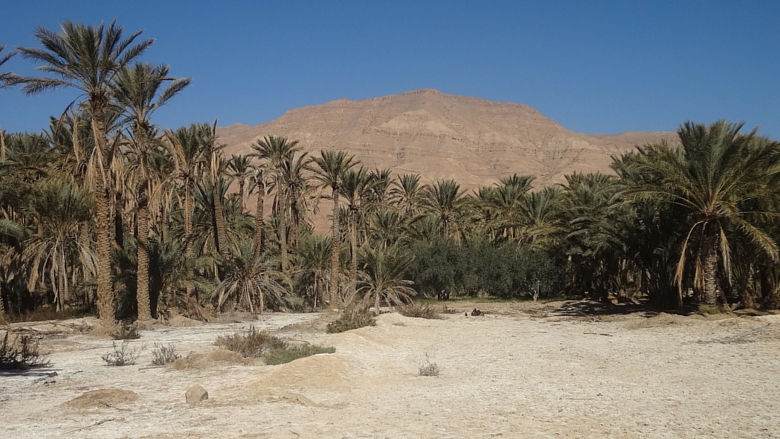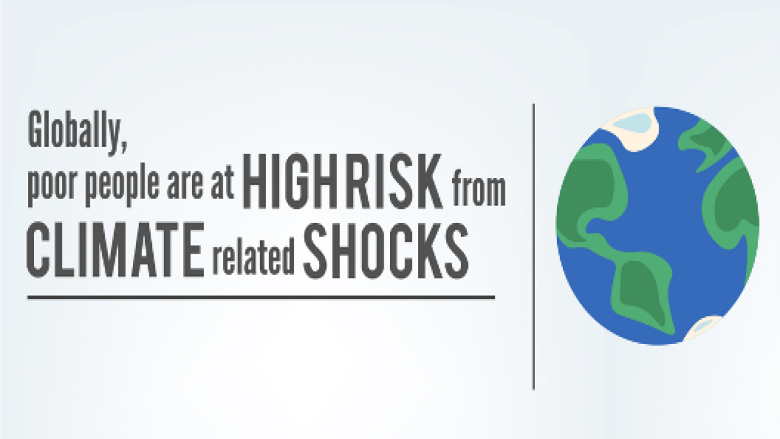They emerge abruptly from the harshly golden Sahara, symbols of ancient culture and protectors of diverse ecosystems. Tunisia’s traditional oases, longtime centers of agricultural production and trade, link the country’s most remote and lagging regions. But the oases are also in peril.
Oases in peril
In recent years, the fertile refuges have become increasingly vulnerable. Tunisian oases face high levels of environmental degradation that are exacerbated by increasing resource demands due to population growth. Climate change is projected to increase temperatures and reduce rainfall, further amplifying these effects. Declining rainfall combined with overexploitation of water will reduce the groundwater available to communities, likely prompting land abandonment and threatening native species that define the exceptional Oasis microclimate. Promoting sustainable land and water management practices and establishing a local participative dialogue are fundamental to restore and enhance oasis ecosystem’s resilience.
New irrigation schemes and modern oases have developed rapidly. But without the right policies, traditional oases are being left behind and even lost. The loss of traditional oases would negatively impact food production. Their disappearance would also hasten the loss of unique biodiversity and plants that are adapted to extreme climates and used as medicine, condiments and for a host of other purposes.
An integrated solution to revitalize oases
In recent years, the World Bank has been working with the government of Tunisia to bring oases back from the brink.
“Development projects in Tunisian oases ecosystems have been largely focused on water use, but the degradation of soils, environmental resources and biodiversity also need to be considered,” recalls Taoufiq Bennouna, Senior Natural Resources management specialist and team leader. “It’s clear that fertilizer or improving water use alone is not enough and that an integrated, cross-sectoral and participative approach to addressing degradation and restoring oases is needed.”
Supported by a grant from the Program on Forests (PROFOR), the Bank aided the development of the first national strategy for the sustainable development of Tunisian oases, which the Tunisia government adopted in 2014. The strategy comprises five key axes: (1) restoring ecologic and environmental functions of oasis ecosystems; (2) restoring economic and socioeconomic functions of Tunisian oases; (3) restoring socio-cultural and touristic functions of oases; (4) improving the livelihoods of oasis communities; and (5) accompanying measures. A dedicated action plan has been developed to help the implementation of the strategy which through its axis focuses on mitigating oases issues presented above.
The strategy addresses also unemployment among women and youth in Tunisia, which is especially high in oases areas. While the unemployment rate in the country stands at about 15 percent, the unemployment of young people is closer to 30 percent. Reinvigorating the oases’ traditions and jobs, while managing natural resources, is a major step toward solutions. For example, if local agriculture is enriched with better composting and water management, yield will be higher and production, of date palm products, for example, will increase.
“We are in the process of assisting with the development of a clear vision to enhance Tunisian oases resilience,” Bennouna said. “The national strategy for sustainable development of Tunisian oases and its action plan are fundamental tools to build a momentum around Tunisian oases. The objective is to help Tunisian institutions and development partners to work, through a common framework, and promote activities that support the traditions and livelihoods of oasian communities in supporting them to cope with desertification and changing climate.”
Adoption of the strategy occurred in tandem with the launch of the World Bank Oases Ecosystems and Livelihood Project, which pilots the participatory approach for oases management that puts citizens at the heart of the decision making process. The project includes initiatives that will be coordinated and implemented by local civil society organizations in six selected oases. About 4,000 households will benefit from this project: the coastal oases of Zarat in Gabes governorate, with 400 farming households; 500 families in Noueil, in the continental oases of Kebili governorate; El Guettar, which has 2,700 families in the mountain oases of Gafsa governorate; and a cluster of three mountain oases (Tameghza, Chebika and Mides) in Tozeur governorate, with 500 households.
Additionally, about 30 community-driven microproject agreements have been signed so far and their implementation is ongoing.
The microprojects include oases cleaning, development of composts from crops and palm waste, rejuvenation of old palms. The palm, an ancient symbol of desert life, is a renewable resource that, along with other heritage plants, has become vulnerable. Its rehabilitation points to greater oasis resilience. Local communities have also requested the development of a technological package on smart natural resources management practices, and the improvement of drinking water, as well as increased production and promotion of date honey and rich date jams to help bring jobs back to the traditional oases.


